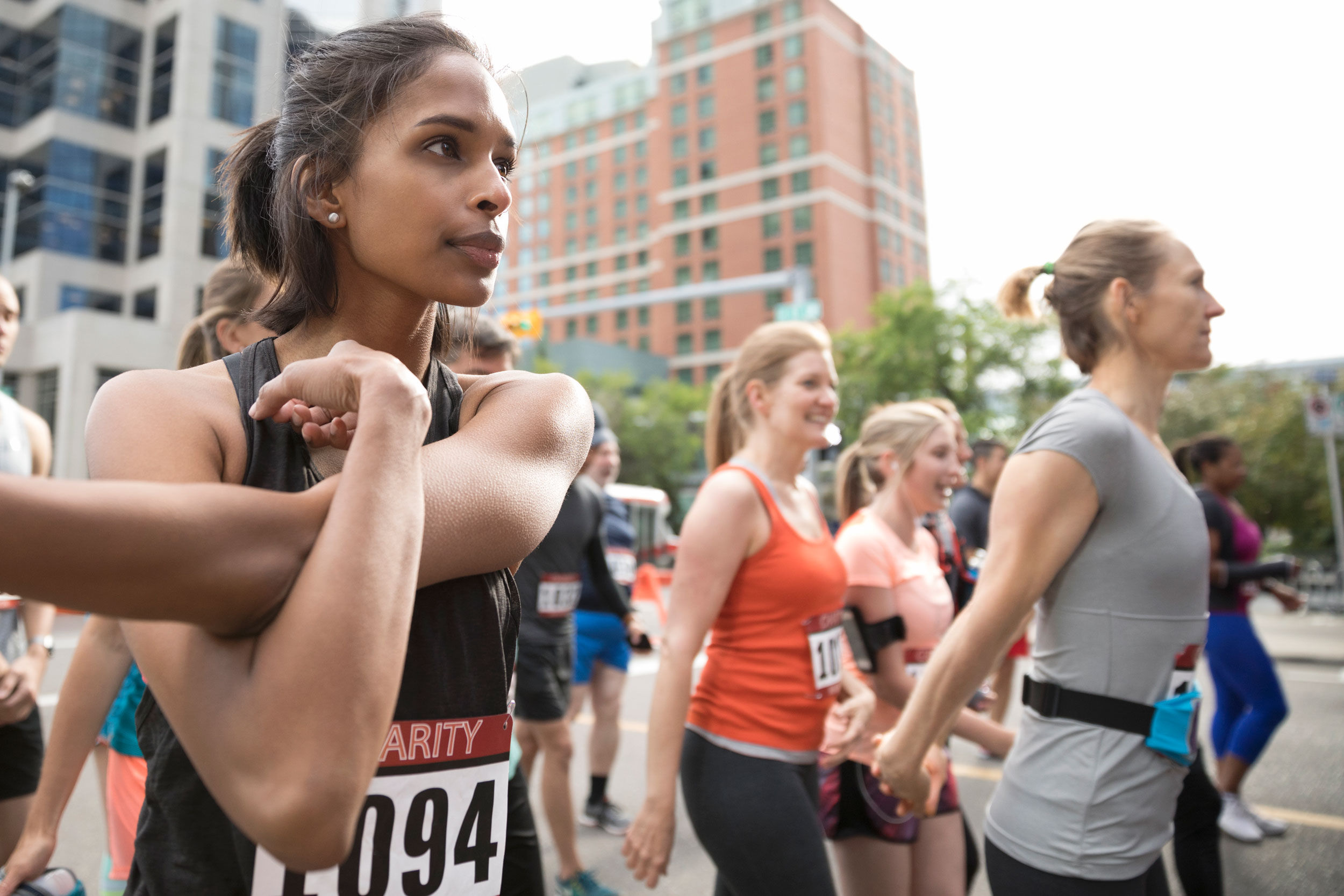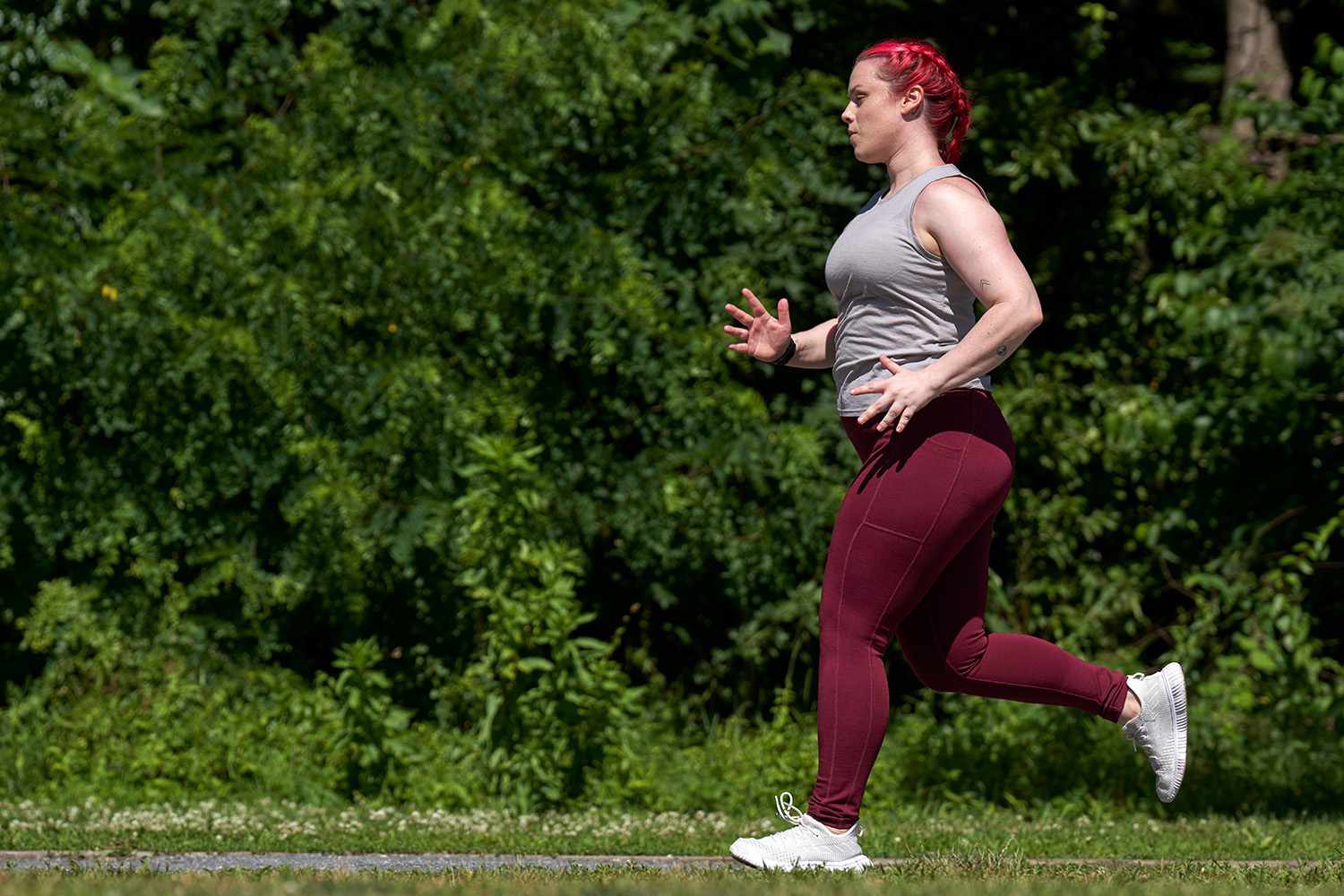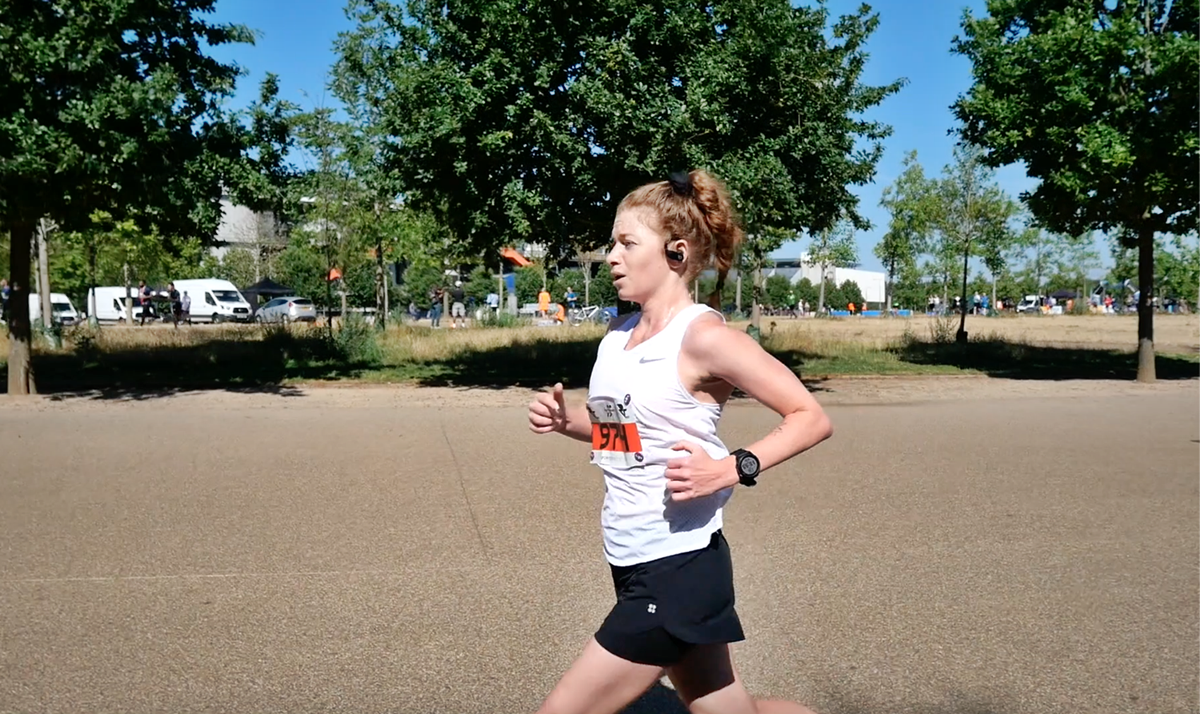

Featured
What Is A 10K Run?
Modified: August 21, 2023
Discover what a 10K run is and why it's featured among popular running events. Get tips for training, pacing, and achieving your personal best.
Introduction
Running is a popular form of exercise that offers numerous physical and mental health benefits. It can be a great way to challenge yourself and set goals. If you’re looking for a running event to participate in, a 10K run might just be the perfect choice.
A 10K run, also known as a 10-kilometer run, is a race or event that covers a distance of 10 kilometers, which is approximately 6.2 miles. It is a commonly organized race distance that attracts a wide range of participants, from beginners to experienced runners.
The allure of a 10K run lies in its balance between being a manageable distance for most people and still providing a significant challenge. Whether you’re an avid runner seeking a new goal or someone who wants to push their limits and improve their fitness, a 10K run can be a rewarding experience.
In this article, we will explore the basics of a 10K run, including how to train for it, valuable tips for running the race, the benefits it offers, as well as some potential challenges you may encounter along the way. By the end, you’ll be equipped with the knowledge and motivation you need to tackle a 10K run with confidence.
The Basics of a 10K Run
A 10K run is a race that covers a distance of 10 kilometers or approximately 6.2 miles. It is a common race distance offered in various running events, ranging from local community runs to major marathons. The route for a 10K race can vary, taking participants through city streets, parks, trails, or a combination of terrains.
One of the key aspects of a 10K run is pacing. It is important to find a comfortable pace that allows you to complete the distance without burning out too early. Finding your pace can be achieved through training and understanding your own fitness level. Some participants aim for a specific time goal, while others focus on simply completing the race.
Most 10K races have support stations along the route, typically offering water and sometimes energy gels to help runners stay hydrated and maintain their energy levels. Additionally, many races have cheering spectators who provide encouragement and motivation for the runners.
It is common for 10K races to have official timing systems to accurately record each participant”s race time. This allows runners to track their progress and compare their performance to others. In larger events, runners often wear bibs with a unique number that helps identify them in the race and allows for accurate timing.
Participating in a 10K run can be a fun and social experience. You will find yourself surrounded by fellow runners with different skill levels and motivations. The atmosphere is often filled with excitement and camaraderie as individuals come together to pursue their personal goals.
Lastly, it is important to note that a 10K run is not limited to experienced runners. Many beginners use the 10K distance as a stepping stone to longer races like half-marathons or marathons. The inclusive nature of 10K races makes them accessible to individuals of various fitness levels and running backgrounds.
How to Train for a 10K Run
Training for a 10K run requires a structured approach to gradually build your endurance and improve your running ability. Whether you’re a beginner or an experienced runner, following a training plan can help you prepare for the race and reduce the risk of injury. Here are some essential steps to consider when training for a 10K run:
- Set a Goal: Determine your desired outcome for the 10K run. Whether it’s to complete the race, achieve a specific time, or simply enjoy the experience, having a goal gives you something to work towards.
- Assess Your Current Fitness Level: Before diving into a training plan, evaluate your current fitness level. This will help you choose an appropriate plan and set realistic expectations for yourself.
- Create a Training Schedule: Develop a training schedule that fits your lifestyle, taking into account your available time for running and other responsibilities. Aim for at least three to four running sessions per week.
- Gradual Build-up: Start with shorter distances and gradually increase your mileage each week. This will allow your body to adapt to the demands of running and reduce the risk of injury.
- Vary Your Runs: Include a mix of easy runs, interval training, tempo runs, and long runs in your training plan. This variety will help improve your endurance, speed, and overall running fitness.
- Cross-Train: Incorporate cross-training activities such as swimming, cycling, or strength training to complement your running and improve your overall fitness. Cross-training helps prevent overuse injuries and provides a welcome break from running.
- Rest and Recovery: Give your body time to rest and recover between training sessions. Include rest days in your schedule and listen to your body’s signals to avoid overtraining.
- Proper Nutrition and Hydration: Fuel your body with a balanced diet rich in carbohydrates, protein, and healthy fats. Stay hydrated before, during, and after your runs to optimize performance and aid in recovery.
- Prepare Mentally: Training for a 10K run is not only physical but also mental. Develop a positive mindset, visualize your success, and stay motivated throughout your training journey.
Remember, everyone’s training needs and capabilities are unique. It’s essential to listen to your body, make adjustments as needed, and seek guidance from a healthcare professional or running coach if necessary. With consistency, dedication, and proper training, you’ll be ready to conquer the 10K run with confidence.
Tips for Running a 10K Race
Running a 10K race can be an exhilarating and challenging experience. Whether it’s your first 10K or you’re looking to improve your performance, these tips will help you make the most out of your race day:
- Arrive Early: Give yourself ample time to pick up your race bib, warm up, and familiarize yourself with the race course. Arriving early helps alleviate pre-race stress and ensures a smooth start.
- Follow Your Race Plan: Stick to the pace and race strategy you’ve practiced during your training. Going out too fast at the beginning can lead to burnout later on. Trust in your training and stay focused.
- Stay Hydrated: Hydration is crucial during a 10K race. Drink water or sports drinks at aid stations along the course to keep your body properly hydrated. Avoid trying new drinks or foods on race day to prevent any digestive issues.
- Pace Yourself: Use the first mile or two to find your rhythm and settle into a comfortable pace. Avoid getting caught up in the excitement and going out too fast. Pace yourself for a strong finish.
- Take Advantage of Aid Stations: If there are water or energy gel stations along the course, take advantage of them if needed. Sip water or consume energy gels to maintain your energy levels.
- Focus on Form: Pay attention to your running form, especially as fatigue sets in. Maintain good posture, relax your shoulders, and keep a slight forward lean. Engage your core and take quick, efficient strides.
- Mentally Break Down the Course: Mentally divide the race into smaller sections or landmarks. Set mini-goals for yourself, such as reaching the next aid station or completing a certain distance. This approach can make the race feel more manageable.
- Find a Running Buddy: If possible, run alongside someone who has a similar pace or goal. Having a running buddy can provide motivation, distraction, and support throughout the race.
- Embrace the Crowd: Feed off the energy of the spectators and fellow runners. Their cheers and support can help boost your morale and push you towards the finish line.
- Enjoy the Experience: Remember to have fun and enjoy the journey. Running a 10K race is an accomplishment in itself, and the atmosphere of race day can be exhilarating. Smile, cheer for others, and soak in the excitement.
Every runner’s experience is unique, so find what works best for you. With these tips in mind, you’ll be well-prepared to conquer your 10K race with confidence and satisfaction.
Benefits of Running a 10K
Running a 10K offers a multitude of benefits for both the body and mind. Whether you’re a seasoned runner or just getting started, here are some key benefits you can expect from running a 10K race:
- Improved Cardiovascular Fitness: Running 10 kilometers requires sustained effort, which helps improve your cardiovascular fitness. Regular 10K training can strengthen your heart, improve circulation, and enhance overall cardiovascular health.
- Weight Management: Running is an effective tool for weight management. A 10K race burns a significant number of calories and can aid in weight loss or weight maintenance when combined with a balanced diet.
- Stronger Muscles and Bones: Running engages multiple muscle groups, including the legs, core, and upper body. Regular 10K training can help build strength and endurance in these muscles, while also increasing bone density.
- Stress Relief: Running is a fantastic stress reliever. Engaging in a 10K race allows you to release endorphins, the feel-good hormones that help reduce stress, improve mood, and promote overall mental well-being.
- Mental Clarity and Focus: Running a 10K requires mental focus and discipline. Training for and participating in a race can improve your mental clarity, boost concentration, and enhance cognitive function.
- Improved Sleep Quality: Regular exercise like running has been proven to enhance sleep quality. By running a 10K, you can enjoy better sleep, increased restfulness, and improved energy levels throughout the day.
- Sense of Accomplishment: Crossing the finish line of a 10K race brings a tremendous sense of accomplishment and pride. The dedication and hard work put into training for a 10K can boost self-confidence and provide a lasting sense of achievement.
- Social Connection: Participating in a 10K race allows you to connect with like-minded individuals who share a passion for running and fitness. You can build new friendships, find running groups, and enjoy the camaraderie of the running community.
- Increased Motivation and Goal Setting: Training for a 10K requires setting specific goals and consistently working towards them. This process can instill discipline, motivation, and perseverance that can be translated to other areas of life.
Running a 10K offers a wide range of physical, mental, and emotional benefits. It is a rewarding experience that can transform your overall health and well-being. Whether you’re aiming for personal growth, improved fitness, or simply enjoying the joy of running, the benefits of running a 10K are numerous and long-lasting.
Potential Challenges in a 10K Run
Participating in a 10K run can come with its fair share of challenges. However, being aware of these challenges and prepared to tackle them can help you better navigate the race day. Here are some potential challenges you may encounter during a 10K run:
- Physical Fatigue: Running 10 kilometers requires physical endurance. Fatigue can set in, especially during the later stages of the race. Building up your endurance through proper training is essential to overcome this challenge.
- Mental Resilience: Running a 10K can also test your mental strength. Pushing through the physical discomfort, maintaining focus, and staying motivated can be challenging. Developing mental resilience through training and positive self-talk is key.
- Weather Conditions: Weather conditions can play a significant role in a 10K run. Heat, cold, rain, or wind can impact your performance and add an extra layer of challenge. Monitoring the weather forecast and adjusting your race strategy accordingly can help you navigate these conditions.
- Crowded Course: In larger races, the course can become crowded, especially at the start. Maneuvering through the crowd and finding your pace may be challenging. Position yourself well at the start line to avoid excessive congestion.
- Hydration and Nutrition: Staying properly hydrated and fueled during a 10K is crucial. Improper hydration or nutrition can lead to fatigue, muscle cramps, or gastrointestinal issues. Practice your refueling strategy during training to find what works best for you.
- Pre-Race Nerves: Nervousness is a common challenge before a 10K race. Performance anxiety and self-doubt can affect your performance. Practicing relaxation techniques, visualizing success, and focusing on positive affirmations can help calm pre-race jitters.
- Running Gear and Attire: Uncomfortable or ill-fitting running gear can become a challenge during a 10K run. Ensure that you have proper running shoes, moisture-wicking clothing, and any additional gear or accessories you may need on race day. Avoid trying new gear on race day to prevent discomfort or blisters.
- Surges in Pace: It’s common for runners to get caught up in the race day excitement and start too fast. These surges in pace can lead to early fatigue and difficulty maintaining a steady rhythm. Stay disciplined and focus on running at a sustainable pace throughout the race.
- Post-Race Recovery: Recovery after a 10K race is essential to prevent injuries and aid in muscle repair. Adequate cooldown, stretching, and proper nutrition will help your body recover effectively. Give yourself time to rest and prioritize recovery post-race.
While these challenges may seem daunting, they are all part of the journey and can be overcome with proper preparation, training, and a positive mindset. Embrace the challenges as opportunities for growth and learning, and remember to enjoy the experience of running a 10K race.
Conclusion
Participating in a 10K run can be an exciting and fulfilling experience. It offers a unique blend of challenge, camaraderie, and personal accomplishment. Whether you’re running your first 10K or aiming to improve your performance, the journey towards the race day involves dedication, training, and mental fortitude.
Throughout this article, we’ve explored the basics of a 10K run, from understanding the distance and race dynamics to training effectively for the race. We’ve also shared valuable tips to help you navigate the race day with confidence and highlighted the many benefits – both physical and mental – that come with running a 10K.
It’s crucial to acknowledge the potential challenges you may face in a 10K run, whether it’s physical fatigue, mental resilience, or external factors such as weather conditions or crowded courses. By being prepared for these challenges and adjusting your mindset and race strategy accordingly, you can overcome them and emerge stronger.
No matter where you are in your running journey, the 10K distance can serve as an important stepping stone towards longer races or simply as a goal to strive for and conquer. Remember to enjoy the experience, embrace the journey, and celebrate the milestones you achieve along the way.
So lace up your running shoes, follow a training plan, set your goals, and get ready to take on the challenge of a 10K run. The sense of accomplishment, improved fitness, and the memories of crossing the finish line will make all the effort worthwhile. Running a 10K can be a transformative experience that not only brings physical benefits but also instills discipline, resilience, and a sense of empowerment that can extend to all areas of your life.









